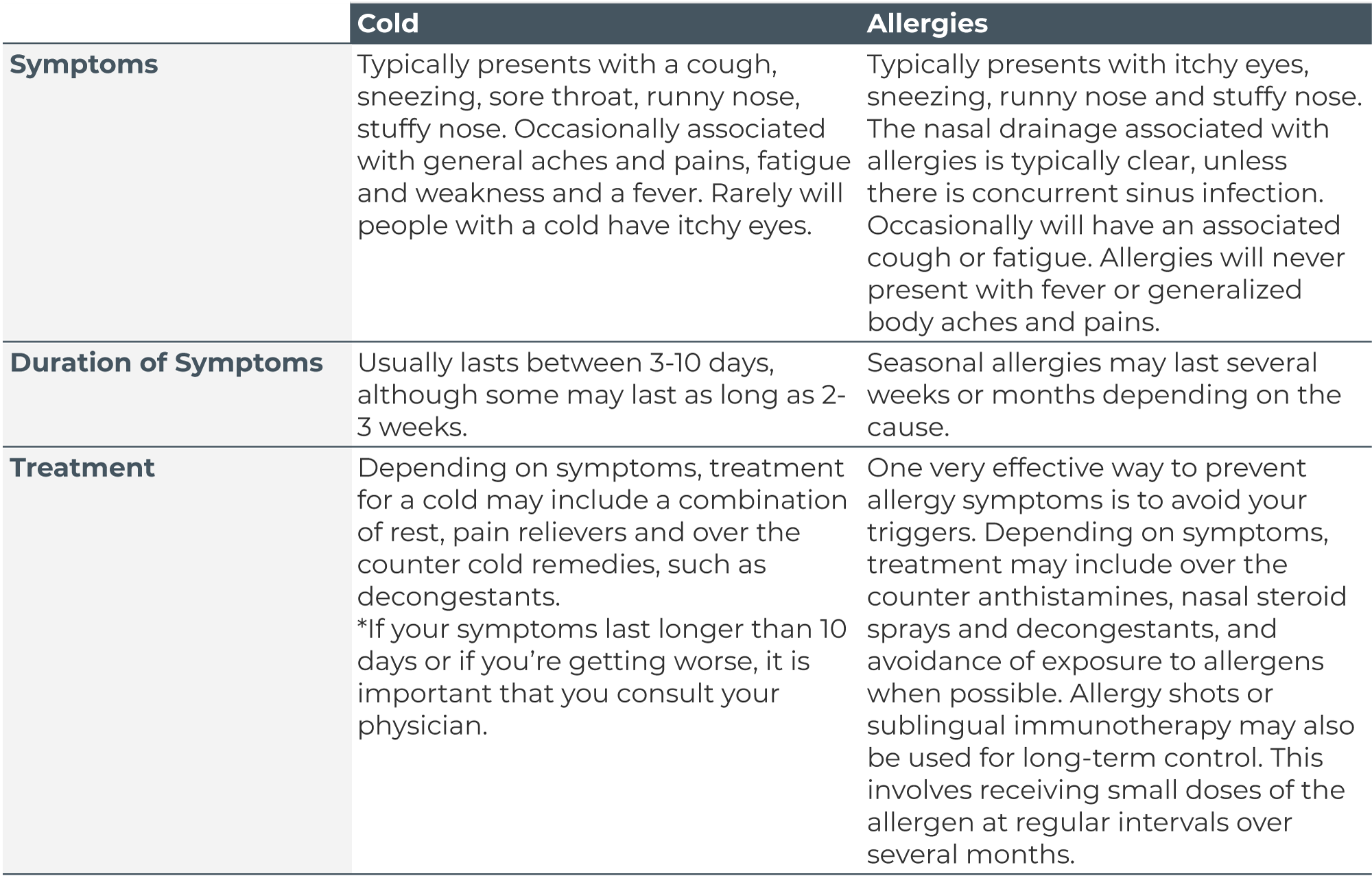Allergies vs. Common Cold: Clearing Up Confusion to Get the Right Treatment
When you have a runny nose and nasal congestion, your first thought may be that you have a cold. Yet, these are also symptoms of allergies.
By learning the differences between allergies and colds, you can find the right method of relief!
Although upper respiratory infections and seasonal allergies share some of the same symptoms, they have different causes.
Pinpointing the Cause
Common colds are caused by viruses that are transmitted through virus droplets that a sick person shared when they cough or sneeze. The Centers for Disease Control and Prevention estimates that the average healthy adult catches two or three colds per year.Seasonal allergies are immune system responses triggered by exposure to allergens, such as seasonal tree or grass pollens. When you are exposed to an allergy trigger, better known as an allergen, your immune system releases certain chemicals called histamines which cause allergic symptoms. With allergies, the symptoms may appear during a certain season or come and go based on the person’s environment. For example, if symptoms appear suddenly when a person is around grass, it is a strong sign that they are due to an allergy, not a cold. An allergy is not contagious.
Compare the Symptoms
Below is a helpful table to distinguish the symptoms, duration and treatment for colds and allergies.
Seasonality Statistics
This time of year, ragweed pollen reaches peak levels and can cause seasonal allergic rhinitis, which affects as many as 23 million people in the United States. Ragweed pollen counts are typically highest in the morning. It is important to try and keep your windows closed at all times, both at home and in the car. Pollen can be tracked into your home via your clothes, your hair or your pet. It is therefore important to change clothes and wash your hands after being outside.Here is a listing of the other pollen seasons for the New England area.
Tree pollen season: March to June
Grass pollen season: May to August
Weed pollen season: August to October.
Mold is present throughout the year although mold spore levels change due to weather conditions such as wind, rain or temperature.
To find out specifics on pollen and mold spore counts, you can visit https://www.aaaai.org/.

